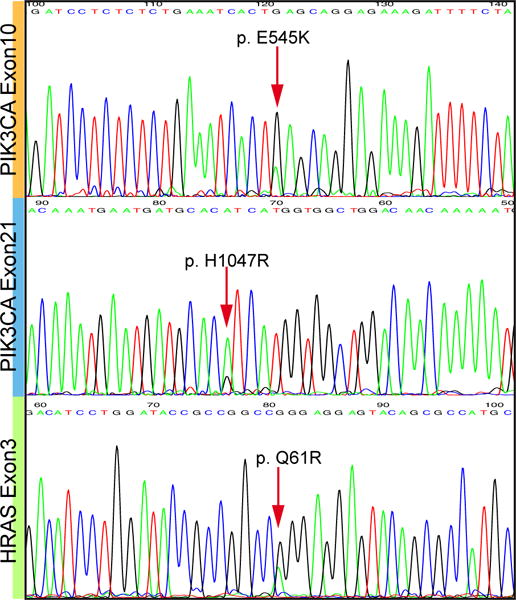Fig. 5.

The invasive apocrine/salivary duct carcinoma group showed common mutations in PIK3CA and HRAS. These included PIK3CA p.E545K (2 cases), PIK3CA p.H1047R (3 cases) and HRAS p.Q61R (3 cases). A total of 6/8 (75%) of these invasive carcinomas harbored mutations in one or both genes, suggesting that they are best classified as salivary duct carcinoma even when they show unusual morphology.
